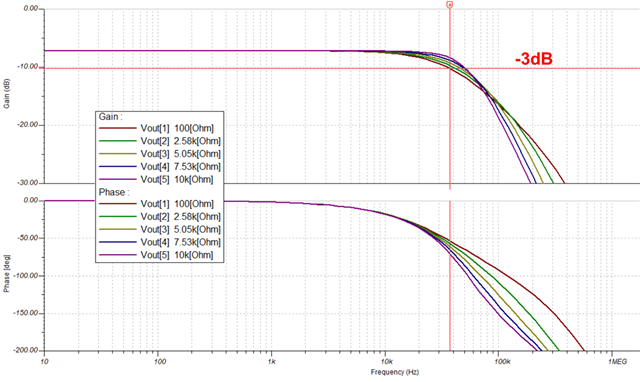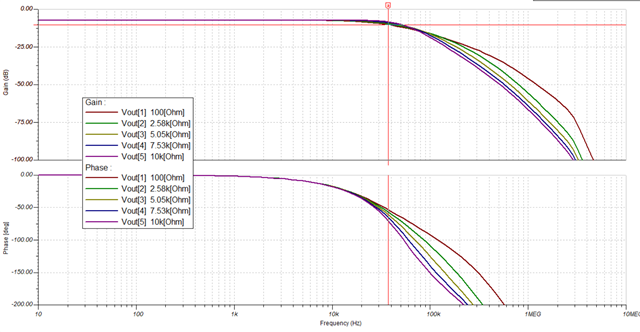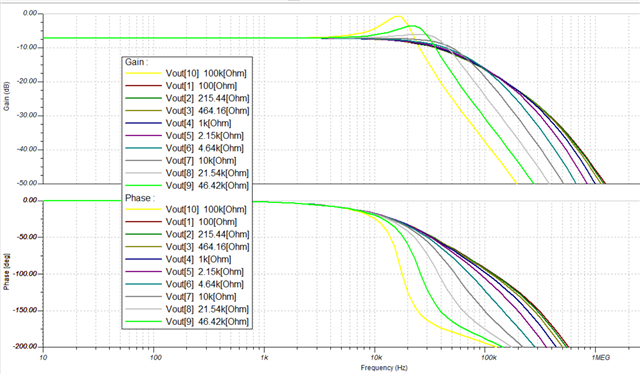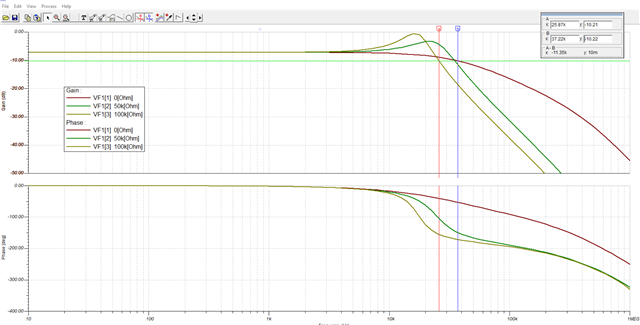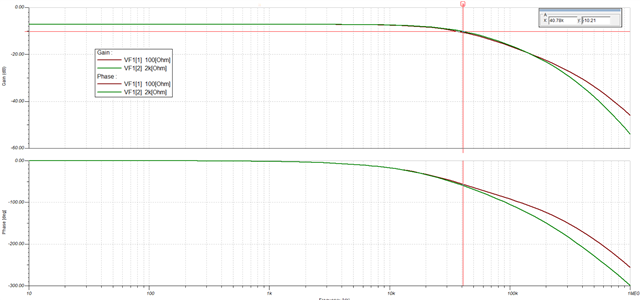Other Parts Discussed in Thread: TINA-TI, LM2902, TMS320F28377D
Dear expert
My customer is using OPA2991. Below is the schematic they are using.


Customer simulated the Bode plot with different resistor(at the output pin of U3) with TINA-TI (see the 1st figure). They found that the bandwidth is 7kHz at 2kΩ and 14.37kHz at 100Ω. They also carried out the experiments. And the results are totally different with simulation. According to the test, the bandwidth is always 42kHz in both 2kΩ and 100Ω. (see the 2nd figure)
(1) Why the results of the simulation were inconsistent with the experiment? I also simulated the same circuit in TINA to verify their simulation results (see the 3rd figure, R7 is the resistor). the bandwidth are 40.86kHz when R7 is 2kΩ and 37.37kHz when R7 is 100Ω.
Could you please check the circuit and explained the influence of the R7 on the bandwidth? Why my simulation result is different with the customer's and different with the experimental results? which result is reasonable?
(2) another phenomenon is that the customer's schematic has some difference with the circuit they simulated in TINA. In the customer's schematic, the test point TP6/7 is set on the input side of the Pi type filter, but in the TINA circuit, the output seems set on the output side of Pi type filter. (see the 4th figure for more detail)
I'm not sure if that's why the experimental results didn't match the simulation. So I changed the circuit in TINA to make it consistent with the actual schematic, in which the output was set on the input side of the Pi type filter. and the results is 39.12kHz when R7 is 2kΩ and 33.57kHz when R7 is 100Ω. (see the 5th figure) obviously, the resistor also affect the bandwidth and the simulation results still don't match the experimental results.




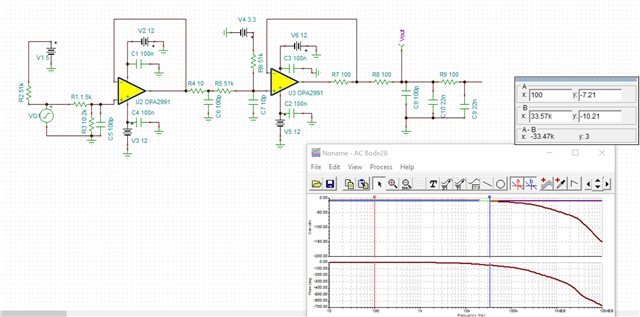
Best regards,
Rannie



